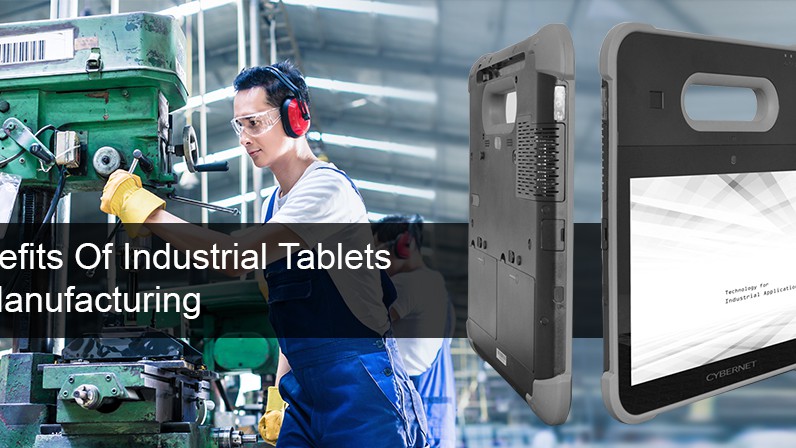Optimization is the process of making something entirely suitable for its specific purpose. Designing cars and planes to be aerodynamic to reduce drag is an example. Building industrial tablets from the ground up to be IP65-rated dust and water-resistant is another.
Optimization in business fine-tunes processes to be more efficient, less costly, or both. Today’s article covers one form of business optimization: lean manufacturing. We define it and then discuss its numerous benefits. Finally, we review how computers can bring lean manufacturing to one’s business processes.
What is Lean Manufacturing? A Quick Overview
Article Guide
Lean manufacturing reduces waste in manufacturing processes, with “waste” defined as any obstacle caused by errors, poor organization, or miscommunication. Examples include:
- Manufacturing goods or services that do not meet customer expectations, demand, or specifications, aka “faulty goods.”
- Lack of participation by workers, who may have ideas and suggestions to eliminate waste.
- Working without the right metrics to measure waste.
- Wrong software, inadequate training on correct software, and other industrial computer misuses.
Lean manufacturing aims to reduce waste. At the same time, many lean methods aim to maintain or even increase production levels, resulting in a net increase in the company’s total productivity and profits.
Key Advantages and Benefits of Lean Manufacturing
Lean manufacturing’s aim to reduce waste brings many advantages and benefits to manufacturers. Following are some of the significant ones for you to consider:
Reduction of waste: The primary aim of lean manufacturing. Excess inventories will be reduced, product defects will be minimized if not outright eliminated, and process flows will be streamlined.
Improved productivity: Lean manufacturing methods look to discover and remove bottlenecks during production that slow down or stall product delivery to customers.
Improve quality: Lean manufacturing aims to find and address the root causes of product defects and errors, resulting in higher-quality products and services.
Better overall customer experience: Delivering low-cost, high-quality products and services on time to customers usually results in happy ones, which in turn means higher customer retention and a more substantial brand reputation.
Sustainability: Increased flexibility and responsiveness will make the company more likely to survive and thrive in today’s rapidly changing market demands.
Employee satisfaction: Morale improves as employees are no longer stricken by unnecessary work and feel part of the solution.
Profitability: Less waste and a better quality product and experience generally result in upticks in profits.
Lean Manufacturing and Technology
Methodologies, or systems of methods, used in lean manufacturing are numerous, with examples including:
- Value stream mapping identifies and charts all the manufacturer’s flows and processes from the entire supply chain to arrival at the customer’s doorstep.
- 5S aims to improve the workplace in a systematic fashion: sort, set in order, shine, standardize, and sustain. The result will be a better final product or service.
- Root cause analysis aims to find the cause of an issue through various methods, such as the fishbone diagram and the five Whys.
Many of these methods relied on data painstakingly collected manually by lean manufacturing experts, also known as Lean Black Belts or simply Lean Experts. Advances in data-gathering technologies throughout the manufacturing sector have dramatically increased the quantity and quality of information, especially with the Internet of Things and Industry 4.0. Manufacturers wanting to ensure the most relevant data for their Lean Experts should gather it with industrial computers and tablets.
Industrial tablets are built to withstand the rigors of manufacturing plants, from the factory floor to the warehouse. Military-grade parts ensure the tablets won’t fall apart when dropped, while built-in barcode scanners and RFID readers make it a breeze for workers to gather the necessary product and service data that lean experts rely on.
The numerous sensors, cameras, and other devices Industry 4.0 relies on should use industrial mini PCs to gather data and react to it depending on their program. (For example, shutting down all industrial robots when sensing a human worker in a forbidden area.) Features like fanless design will ensure the PCs aren’t affected by the harsh environment. At the same time, Power over Ethernet will allow them to be placed where needed without concern for nearby power sources.
Finally, manufacturing workers and lean experts can access all that data onsite via an industrial panel PC, confident its rugged design will not be affected by the sometimes harsh manufacturing activities around them.
Optimize Your Lean Manufacturing Methods With Cybernet
Lean manufacturing optimizes manufacturing processes by reducing waste, such as excess inventory, to the wrong metric measurements. Contact the team at Cybernet Manufacturing if you and your lean experts are looking to implement lean manufacturing throughout your company. Optimized to work under harsh conditions, our industrial and enterprise PC lineups will collect and provide the necessary data for your lean manufacturing efforts, ultimately leading to greater productivity and profit.
Join the conversation and connect with us on this and other relevant topics – Follow us on Facebook, Twitter, Instagram, LinkedIn, and TikTok.
Benefits Of Industrial Tablets In Manufacturing
November 9, 2016
Industrial tablets are becoming increasingly popular in the manufacturing sector. Taking a more pragmatic approach than consumer-focused enterprises, manufacturing environments choose to deploy military grade tablets…
0 Comments8 Minutes
You Can't
Learn from a Pop-up
But we can deliver knowledge to your inbox!
We dive deep in the industry looking for new trends, technology, news, and updates. We're happy to share them with you.
Knowledge, News, and Industry Updates Right in Your Inbox



